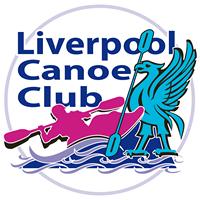Alps Alternative Week 1 Pembroke.
Day 02a Cardiff WW Course 8 Cumecs
Most headed off for the WW course again, still pumping 8 Cumecs it was at a good level. Most of the newcomers were soon up to speed and flying around the course with ease. It really was a blast.

Although relatively shallow in places most of the features had plenty of water at this level and the holes while friendly were still powerful and deserved respect. The only things to watch out for are the blue plastic rocks as they can be a pain if you bang an elbow or other part of the body if you get the breakout wrong.

There seemed to be plenty of space and only a few of the 50 public places were taken. There were rafts and inflatables on the course with centre staff, but these only numbered 3 at the most. You really do get a lot of paddling in when paddling on an artificial course with an escalator. This was really turning out to the be Alternative Alpine Rivers trip we had all hoped for.
Day 02b Abereiddy Beach to Porthgain (Sloop Inn) and return
A few Alpine paddlers had broken with the tradition of paddling the boats they were going to take the Alps and had also brought long pointed boats with hatches on.
This alternative group paddled along the rocky coasts and headlands to Porthgain, stopped for a while for lunch and then paddled back again. Apparently, the Sloop Inn was the highlight of the trip – It must have been fantastic as the coastline here is truly beautiful.
 Porthgain HistoryThe village of Porthgain has a wealth of historical relics from its time as a prosperous industrial harbour in the early 1900s. Porthgain HistoryThe village of Porthgain has a wealth of historical relics from its time as a prosperous industrial harbour in the early 1900s.
In later years the slate trade was abandoned, although Porthgain survived by turning to brickmaking, and later to crushed roadstone. Large brick hoppers dominate the harbour. These hoppers were used to store crushed dolerite before shipment and are now a Scheduled Ancient Monument. Slate, from a local quarry, was handled through the harbour from 1850 to 1910. Bricks were made in the harbour area from 1889 to 1912 using waste from the slate operation. The crushed dolerite (1889–1931) was used as a road stone. In the 1980s Porthgain was designated as a conservation area and the industrial properties and land were purchased by local residents and the Pembrokeshire Coast National Park Authority. The harbour, still home to local fishermen, can get very busy in the summer with recreational boaters. Other attractions and conveniences include the Pembrokeshire Coast Path rambling up both sides of the harbour, the “Strumble Shuttle” bus, and the Sloop, which used to be called the “Step In” when boats were able to dock beside the pub and the crews could step in. Porthgain also has the Shed, a small bistro situated by the Quay and the Harbour Lights Gallery, which is located in the manager’s office of the old works. Porthgain Kayak Club operates voyages from the harbour during the summer months. |

 At one time, the harbour exported slate from quarries a few miles south at
At one time, the harbour exported slate from quarries a few miles south at